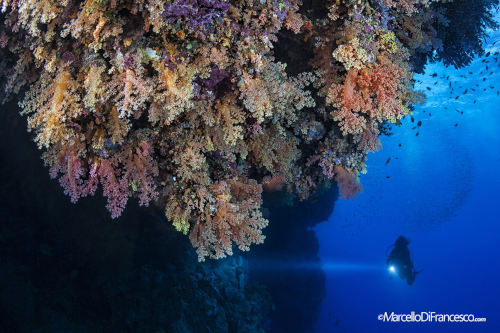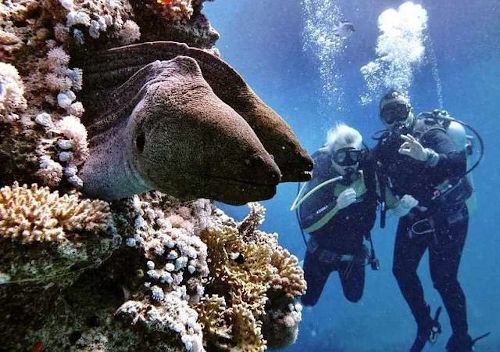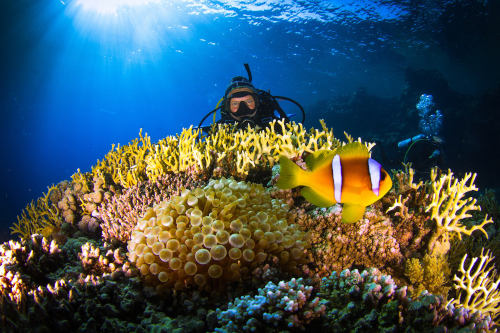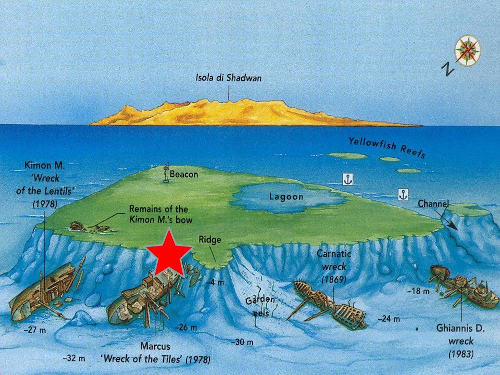Exploring the Underwater Wonders:
Top 10 Dive Sites in the Red Sea
Exploring the breathtaking underwater world is a dream for many diving enthusiasts, and the Red Sea offers some of the most remarkable dive sites on the planet. With its crystal-clear waters, vibrant coral reefs, and diverse marine life, the Red Sea is a haven for divers seeking unforgettable underwater adventures. In this article, we will take you on a virtual tour of the top 10 dive sites in the Red Sea.
1. Ras Mohammed National Park, Egypt:
Located at the southern tip of the Sinai Peninsula, Ras Mohammed National Park is renowned for its stunning dive sites. The park boasts vibrant coral reefs teeming with an abundance of marine life, including colorful tropical fish, turtles, and even the occasional reef shark. Popular sites within the park include Shark Reef and Yolanda Reef, where divers can witness breathtaking drop-offs and explore the remnants of a sunken cargo ship. Image courtesy of Egypt Tourism
2. The Brothers Islands, Egypt:
Situated in the middle of the Red Sea, the Brothers Islands are a magnet for experienced divers. These two small islands offer thrilling drift dives, deep walls, and the opportunity to encounter large pelagic species such as hammerhead sharks, thresher sharks, and even the elusive oceanic whitetip shark. The stunning coral formations and dense schools of fish make the Brothers Islands a must-visit destination for advanced divers. Photo courtesy of AlertDiver / Marcello Di Francesco

3. SS Thistlegorm, Egypt:
The SS Thistlegorm is a famous World War II shipwreck located near Sharm El Sheikh. This well-preserved wreck, sitting at a depth of 30 meters, is a paradise for wreck diving enthusiasts. Exploring the cargo holds filled with military vehicles, motorcycles, and even train carriages is like stepping back in time. The marine life surrounding the wreck is equally captivating, with large groupers, barracudas, and an array of colorful fish making it their home.
4. Elphinstone Reef, Egypt:
Situated off the coast of Marsa Alam, Elphinstone Reef is a marine sanctuary that offers a thrilling drift dive experience. This narrow reef is known for its steep walls covered in soft corals and its encounters with sharks, including oceanic whitetips and the occasional hammerhead. The vibrant colors and abundant marine life at Elphinstone Reef make it a favorite among underwater photographers. Photo courtesy of Egypt Independent.
5. Dahab Blue Hole, Egypt:
Dahab's Blue Hole is a world-renowned dive site that attracts divers from all corners of the globe. This unique site features a captivating underwater sinkhole that drops to a depth of over 100 meters. The Blue Hole offers a stunning coral wall dive, and experienced divers can explore the "Arch," a passage that connects the Blue Hole to the open sea. The marine life here includes turtles, schools of fish, and even the occasional reef shark. Photo courtesy of Naama Blue Hotel.
6. Sha'ab Rumi, Sudan:
Located in the Sudanese Red Sea, Shaab Rumi is famous for its steep walls and strong currents, making it an exciting destination for experienced divers. The site is home to Jacques Cousteau's "Precontinent II" underwater habitat, which served as an experimental station in the 1960s. Divers can explore the remnants of this historical structure while encountering colorful coral formations and an abundance of marine life.
7. Giftun Island, Egypt:
Giftun Island, located near Hurghada, is a popular dive site known for its beautiful coral gardens and vibrant marine life. The island offers a variety of dive sites suitable for all levels of divers, from beginners to experts. The crystal-clear waters provide excellent visibility, allowing divers to observe an array of fish species, including clownfish, angelfish, and butterflyfish. Giftun Island is also a great spot for snorkelers, with shallow coral reefs close to the shore. Photo courtesy of Red Sea Life Dive Center.

8. Fury Shoals, Egypt:
Fury Shoals is a group of reefs and small islands located in the southern Red Sea. This remote and pristine area offers an array of dive sites with breathtaking coral formations and an abundance of marine life. Divers can explore underwater canyons, swim-throughs, and encounter schools of colorful fish, turtles, and even dolphins. Fury Shoals is a true paradise for underwater photographers, with its vibrant coral gardens and crystal-clear waters. Photo courtesy of Blue O2.

9. Abu Nuhas Shipwrecks, Egypt:
The Abu Nuhas reef is known as the "Ship Graveyard" due to the numerous shipwrecks that rest on its seabed. This site near Sharm El Sheikh is a treasure trove for wreck diving enthusiasts. Among the famous wrecks are the Giannis D, the Carnatic, and the Chrisoula K, each offering a unique diving experience. The wrecks are covered in colorful corals and attract a wide variety of marine life, including schools of snappers and batfish. Map courtesy of Diving Star Center.

10. Tiran Island, Egypt:
Tiran Island is located at the entrance of the Gulf of Aqaba and offers an unforgettable diving experience. The island is surrounded by pristine coral reefs, including the renowned dive sites of Jackson Reef, Woodhouse Reef, and Thomas Reef. Divers can explore impressive drop-offs, encounter schools of barracudas and snappers, and even spot larger pelagic species like sharks and rays. The clear waters and the abundance of marine life make Tiran Island a top destination for diving enthusiasts. Photo courtesy of Egypt Tours Plus.
The Red Sea is a true paradise for divers, with its incredible dive sites offering a wide range of underwater experiences. Whether you're an experienced diver looking for thrilling encounters or a beginner eager to explore the vibrant coral reefs, the Red Sea has something for everyone. So, grab your gear, dive into the crystal-clear waters, and prepare to be amazed by the beauty and diversity of this underwater wonderland.